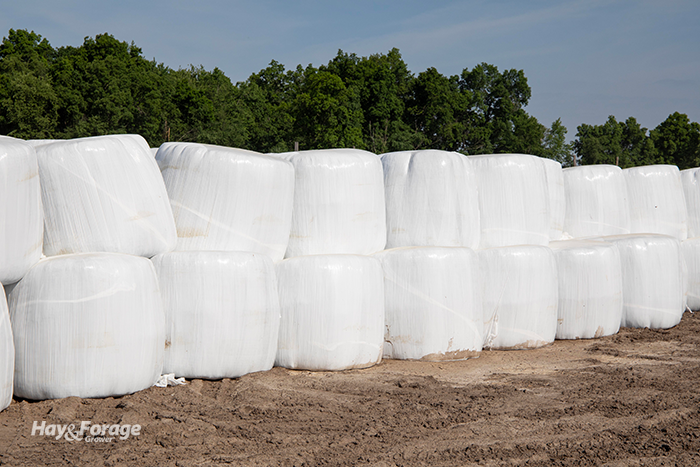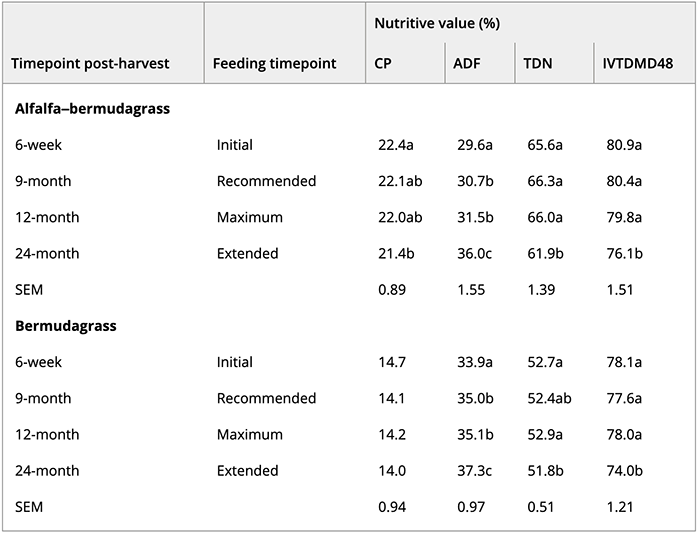
Baleage is no longer the novel haymaking practice that it used to be. Many farmers in the humid U.S. region have now jumped on the approach of turning the balers loose in the field before hay has lost enough moisture to package it into dry bales.
Researchers at the University of Georgia note that the general recommendation is to feed baleage out within nine months of harvest, but they also acknowledge that this might not fit into some beef production systems. For example, it may be nearly 12 months before the baleage is needed as a supplement for lactating or backgrounding cattle. It could also be that abundant pasture growth negates the need to feed all of the baleage a farm produces in a given year.
Because baleage is stored outside, it is prone to wildlife damage, which can compromise the integrity of the plastic over time. Bales may also begin to lose shape as the months progress.
The Georgia researchers completed a study documenting changes in baleage forage quality over time. They sampled bales for postharvest forage quality at six weeks, nine months, and 12 months. A subset of bales was then held for 24 months and sampled. Their findings were recently published in Crop, Forage, and Turfgrass Management.
The three-year study used 4x4 bermudagrass (Tifton 85) or alfalfa-bermudagrass bales harvested at about 55% moisture. The bales were transported immediately after baling to be wrapped at the storage location. Six layers of polyethylene plastic were used to exclude oxygen, and bales were checked weekly to ensure wrap integrity. Any holes were patched immediately with approved silage tape.
Good for a year
Crude protein (CP), total digestible nutrients (TDN), and the in vitro true dry matter digestibility at 48 hours (IVTDMD48) of the alfalfa-bermudagrass and the bermudagrass baleage did not change during the first 12 months. However, in both forage types stored up to 12 months, the measured acid detergent fiber (ADF) values increased by about 1 percentage unit between six weeks and nine months. This was attributed to some secondary heating. The nine- and 12-month sampling dates had statistically similar ADF values.
The subset bales held for a 24-month evaluation yielded similar quality results to those bales described above. However, except for CP, bales held for 24 months suffered significant forage quality declines (see table below).
Nutritive value of alfalfa–bermudagrass and bermudagrass baleage stored up to 24 months postharvest

As a result of this study, the Georgia researchers determined that baleage may be safely stored for up to 12-months postharvest before feedout and still meet the needs of beef cattle with high nutrient demands. Extended storage, up to 24 months, is not recommended because of a significant drop in forage quality.
It was noted that maintaining bale wrap integrity beyond nine months can be challenging. Regardless of feeding strategy, sample and test the forage to ensure the stored quality will meet the nutrient needs of the livestock it is fed to.

